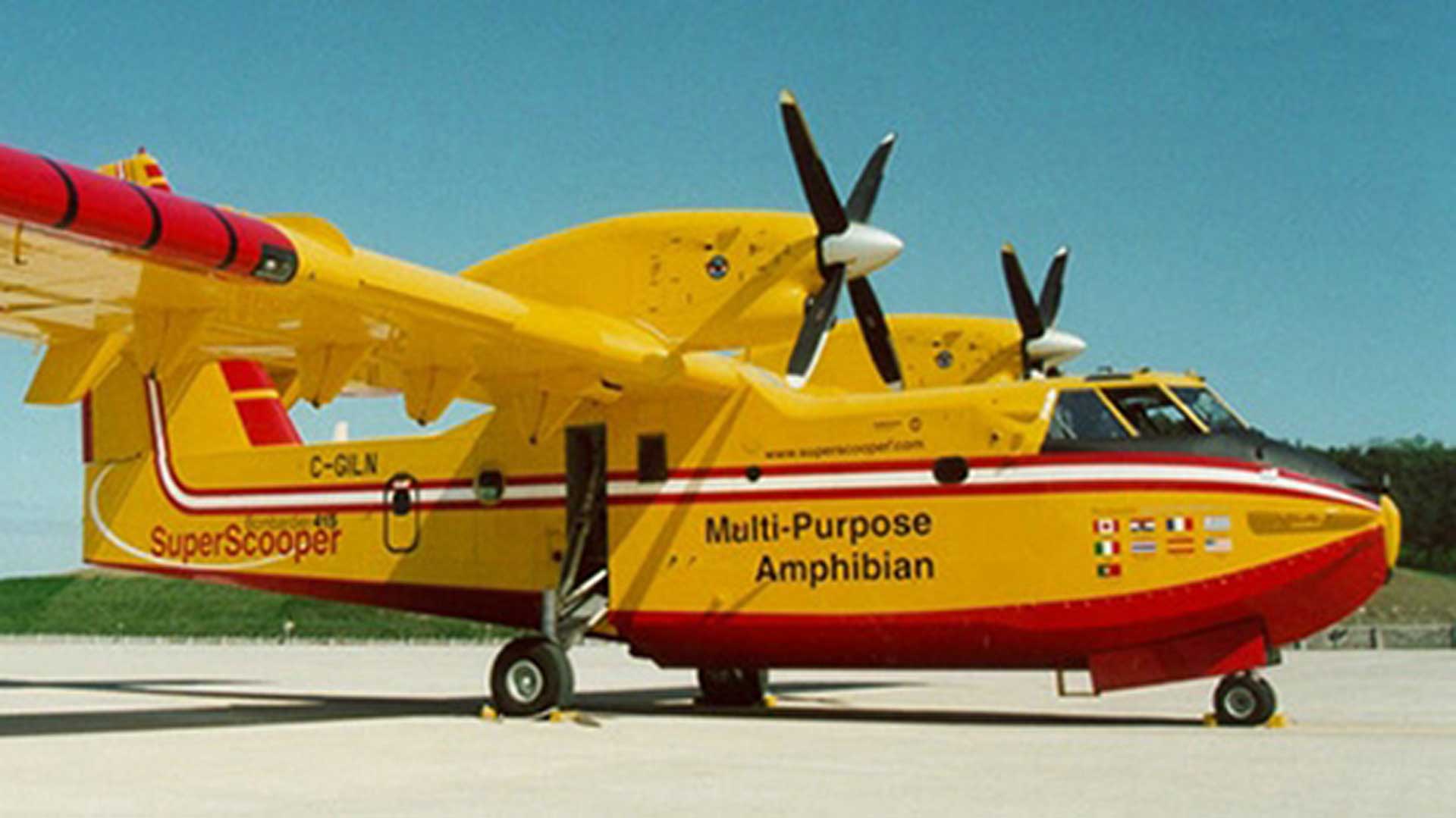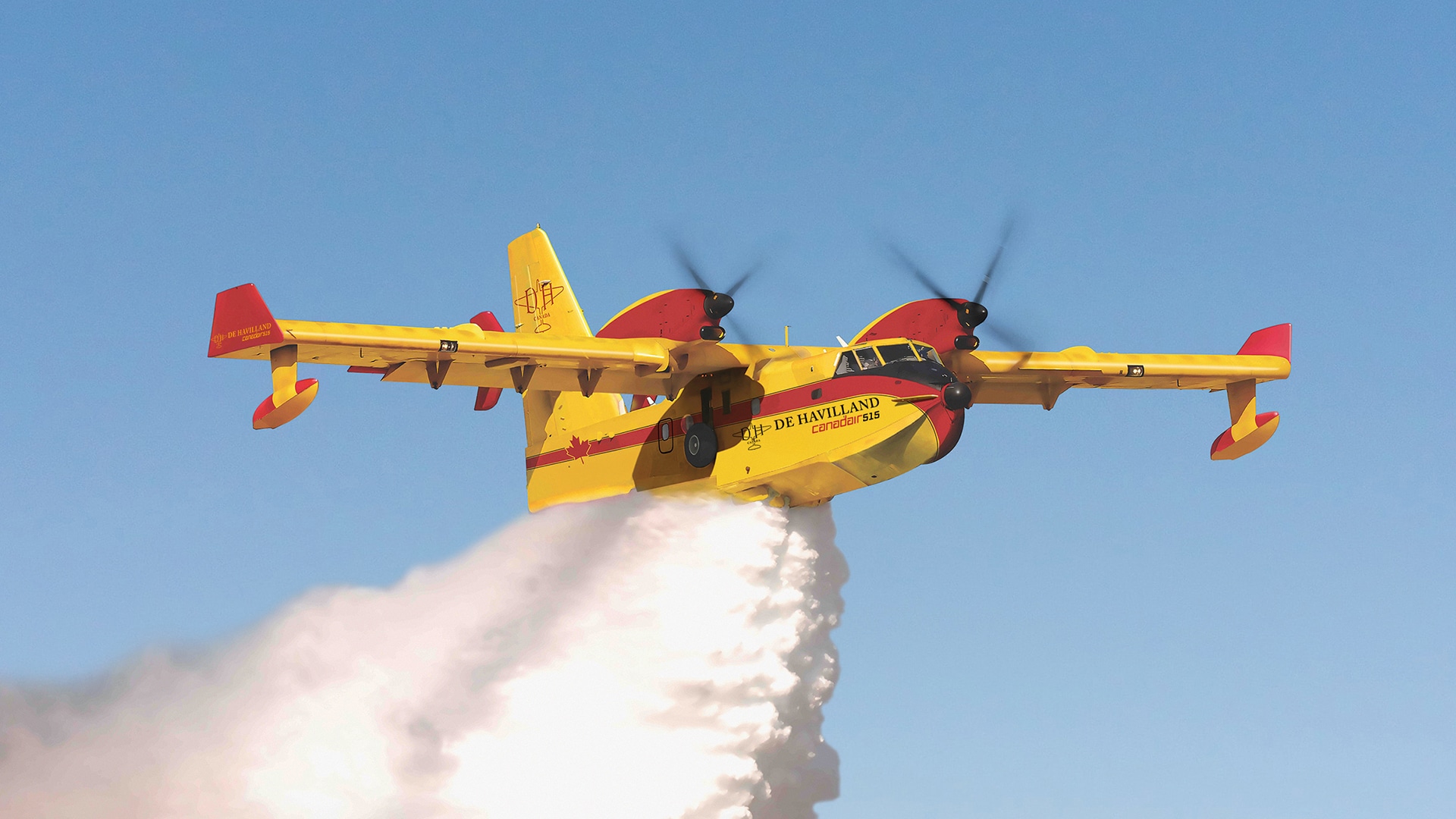The De Havilland Canadair 515 builds on the history of the iconic Canadair CL-215 and CL-415 aircraft which have been a critical part of European and North American aerial firefighting fleets for over 50 years. Important upgrades increase the functionality and effectiveness of this legendarily rugged firefighting aircraft.
De Havilland Canada is proud to hold the type certificates for the Canadair Aerial Firefighters and provide comprehensive, timely support to their operators and maintainers of these exceptional aircraft.
De Havilland Canadair 515

CL-415EAF
The “Enhanced Aerial Firefighter” (EAF) mirrors the CL-215T conversion program and updates with the addition of operator-requested enhancements.
The CL-415EAF include the winglets, finlets, higher operating weights, and foam injection system of the CL-415. In addition to these standards, other improvements have been introduced with conversion upgrade. The improvements introduced in the converted CL-415EAF aircraft would naturally lead to setting a new production standard for aerial firefighting aircraft.
- Full modern avionics package
- Component modernization improvements to address all fleet obsolescence issues
- Corrosion protection enhancements based on operator feedback
- Flight deck air-conditioning system
- Customized external paint scheme

CL-415
The CL-415 was developed from the piston-powered CL-215 Series 5 aircraft in combination with the advances from the turbo-conversion program.
The primary difference between the CL-415 over the CL-215T is an EFIS avionics suite. Additional improvements, which first appeared on the CL-215T, include winglets and finlets, higher operating weights, an increased tank capacity (6136 litres/1621 USG), and the addition of a foam injection system.

CL-215T
The CL-215T was designed to be a simple turbine update for the piston-powered CL-215. Initially, Canadair converted two aircraft to turbine configuration in 1989 to act as development and technical demonstrator aircraft.
The first of these prototypes flew on June 8 that year, and retrofit kits for piston CL-215 aircraft to the new standard were offered. However, Canadair elected not to continue with the CL-215T kits as the internal business case favoured new production aircraft over the conversion program, and the new CL-415 was developed.
CL-215T vs CL-415
- A CL-215T carries around a 300-lb-lower payload than the CL-415 and does not have an EFIS flight deck.
- The major visual difference is the CL-215T has a two-door bomb bay while the CL-415 has a four-door bomb bay. (Which one is better is continuously debated by the worldwide operator base.)

CL-215
The CL-215 was designed as a specialist firebomber, particularly suited to heavily forested regions. The resulting aerial firefighter is powered by two Pratt & Whitney Twin Wasp R-2800 radial engines and is capable of scooping up 5436 litres (1436 USG) of water in 12 seconds from a water source. The CL-215 Series 1 aircraft first flew on October 23, 1967 and the first delivery was to the French Civil Protection agency in June 1969.
Production of piston-powered CL-215s continued through 1990 ending with the Series 5 aircraft standard.
Spares Support
As the type certificate holder, De Havilland Canada maintains a comprehensive inventory for the CL-215, CL-215T, and CL-415.
